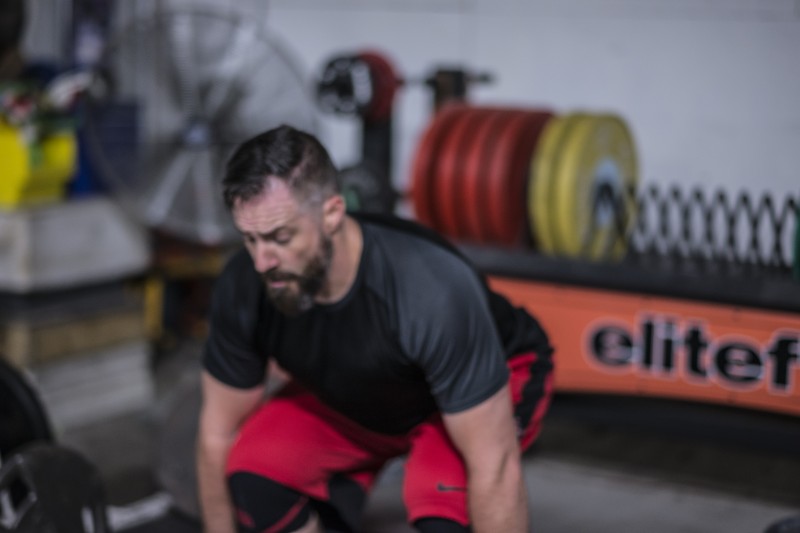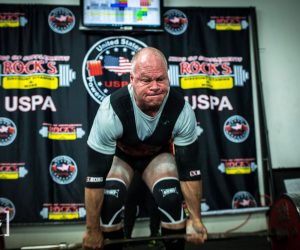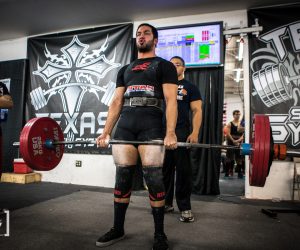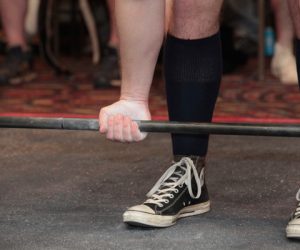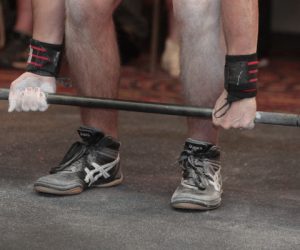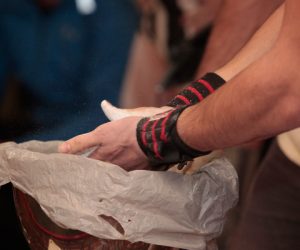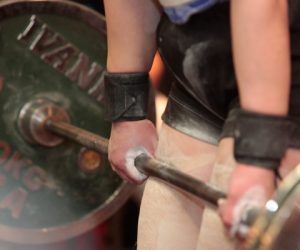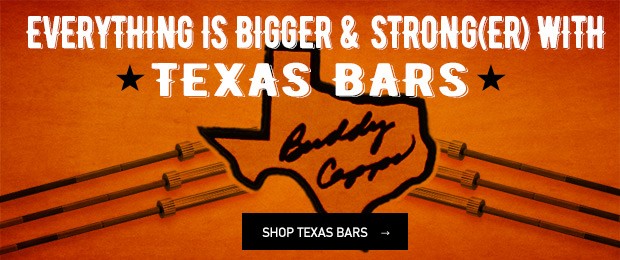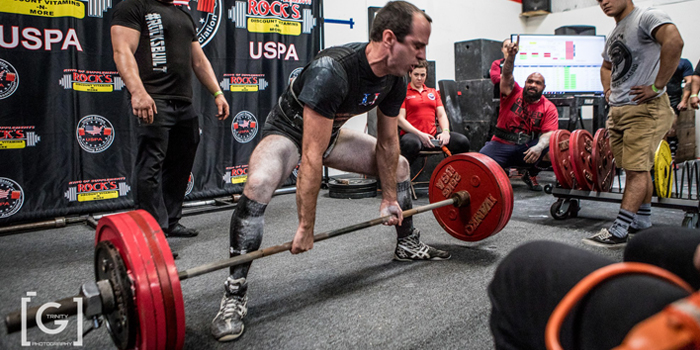
Have you ever heard the saying “The meet don’t start until the bar hits the floor?” It is attributed to former world champion and record holder Don Blue. The phrase has been used in a variety of meanings, most of which relate to the deadlift’s awesomeness. It’s awesome all right. My point here is slightly different; this is about what a judge can see at the deadlift that makes this phrase so precise.
This is the article series I prepared for you to show you the lifts from the perspective of the judge’s chair. In the first and second parts, about the squat and the bench press, I explained why this perspective is peculiar and why we learn so much from it. Most importantly, though, I explained why the judge’s perspective can help you, the lifter, improve your performance.
PART 1: From the Judge’s Chair: The Squat
A judge sees hundreds of lifts during a small meet — thousands during a big meet. That provides a lot of perspective on anatomical differences and their relationship with lifting mechanics, and even if the judge has no biomechanics training, he or she develops an eye for obvious mechanical disadvantages. Most of the time, it is possible to predict when a lift will fail based on how these disadvantages are managed at the platform.
There is an enormous variety of non-lifting behavior, from pre-lifting rituals, focus signs, signs of lack of focus, nervousness, excessive psyching up, insufficient psyching up, confusion, terror, fun, etc. This equates to mistakes — all sorts of mistakes.
“The meet don’t start until the bar hits the floor.”
Let’s consider ourselves done with the awesomeness argument; deadlifting specialists may stop cheering, benchers may stop swearing, and we can move on. The reason Don Blue’s phrase is so true is that you can have had the best possible squat round, broken records on the bench press, but if you bomb out on the deadlift, all the four previous hours go down the drain. You are disqualified. In a sense, you are only actually “in the game” if you get your first deadlift approved.
And, dear reader, I speak from experience: by the end of the bench press round at my last world championship (2016), I was 50 kilograms (110 pounds) ahead of the second lifter on my class (six lifters). Easy win, right? Except I tore my hamstring on the first deadlift. I dramatically, beautifully, got carried off of the platform – the whole enchilada. But that was it for me as an athlete. I spent the following four days in a green shirt (judge), limping around miserably, and taking anti-inflammatories because, in spite of it being an important tear, it was still attached to the bone (so, luckily no hospital or surgery).
There I was, miserably judging, when the best bencher of the meet broke his 600-pound barrier on the bench press. A lean lifter, great technique, happy as hell, and went on to about 630 pounds. We were all happy. We were all very happy until he injured his groin on the first deadlift. He limped up the platform and tried again: nope. Just like me, he got disqualified.
Why does this kind of thing happen? I can give you a thousand reasons. It is the one I don’t list that counts. Bottom line: you must be extra careful with your first deadlift attempt. Things to consider:
- Are you properly hydrated? Remember, it is the third round. It is easy to forget basic things like keeping your body properly fueled and hydrated. Most studies about the deleterious effect of dehydration on performance and its positive association with injury incidence are concerned with heat illness. But dehydration is an independent injury factor. As a judge, I’ve witnessed too many athletes neglect hydration during a long meet.
- Do you have a previous injury that “speaks” to you during the deadlift? Or even whispers?
- Was your squat round especially strenuous?
- Did you check your effort perception at about 80% in the warm-up area?
- Are the plates in the warm-up area calibrated? I am supposing the plates at the competitive platform are (therefore, they are different).
- Are you familiar with the bar being used on the platform? Is it the same type used in the warm-up area?
Let’s elaborate on this. Hydration is much more serious than previously considered. Today we know that even mild dehydration (around two percent of bodyweight) can cause negative effects on performance. Missing your first attempt for lack of strength means you will probably miss your second and third attempts as well. If you are dehydrated, you are weaker, period. Missing your attempts and bombing out are not the worst that can happen to you; a bad injury at the platform is. A previous injury, even a little one, can be anything. But many of the things it can be may lead to a catastrophic tear at the platform after hours of lifting, improper hydration, bad nutrition, and emotional stress.
While by no means will I make the ridiculous claim that a deadlift is half a squat, they do involve many of the same muscle chains. If you had to grind through your last squat attempt, these muscles are not even close to as healthy as they were when you established your first attempt at the gym. There, you arrived well-nourished and hydrated, happy, rested, and went right to the platform to deadlift, am I right? Not at the meet. You are fatigued. Your posterior chain is worn out. Your extensors may be on the verge of tearing.
Or not. I’ve seen lifters get a “second breath” after the bench press and PR their deadlift by over 30 pounds. You don’t know what will be your case.
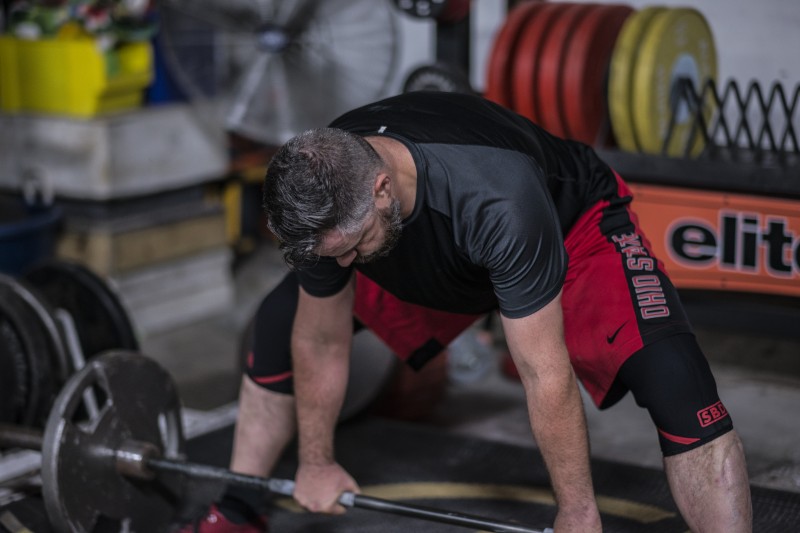
Don’t neglect your warm-up. Don’t over warm-up either, of course; you really don’t need to “pre-activate” anything. You need to check your strength level. If the weight you were supposed to be able to perform four to five reps with feels awfully heavy, as if you wouldn’t be able to double it, decrease your first attempt while you can. You are weaker than you predicted.
That brings me to the following item: there is a non-published consensus that non-calibrated plates are, on average, 10% lighter than calibrated plates. “Oh, but 10% is nothing!” No, it is not nothing. It is a big something. Suppose your first attempt, as measured with non-calibrated plates, is 285 kilograms/627 pounds. That’s in fact 256.5 kilograms/564.3 pounds. There’s a 62.7-pound difference there. C’mon, that is far greater than the jump you would make from the first to the second attempt. You might be bombing out because of cheap iron, especially if that is what is available in the warm-up area and you trust it. Just don’t.
Finally, did you always train with a deadlift bar or a power bar? It may sound crazy because everyone loves a deadlift bar, but if you never used one before and you are strong, loading it with many reds, you should be careful with your first attempt.
And here is the sad truth from the judge's chair: we know you are going to bomb out from the first attempt. If you miss the first attempt because you are not strong enough for that weight, you are done.
The whole point here is to take the deadlift round seriously and more cautiously than you did the previous ones. Be conservative on your first attempt. Don’t bomb out.
The First and Next Attempts
I can hear your thoughts from the previous item: “If I lift too light on my first attempt, then I will have to make too big of a jump for the second!” Maybe. Or maybe not. In many of the scenarios above, your previously established first attempt was wrong, so no. Your following attempts will be based on the performance of the previous one and not on the artificial (or not contextual) numbers you had in mind.
But let’s suppose you are right: you were stronger and you started too conservative for the “game’s sake.” How do you deal with a bigger weight jump towards the following attempts? Some people just have it in them and can handle big jumps but most don’t. One strategy is using post-activation potentiation (PAP): perform static holds between attempts with a weight slightly higher than the next attempt. It may work (there is evidence it can; I’ve seen it working) or it may not. You will only know if you try before the meet in training.
Weight increases between attempts depend on many things. We know a fraction of them. Some are slightly predictable, like bodyweight and sex. Smaller lifters will handle smaller weight increases between attempts, on average. Women will handle smaller increases between attempts than men, on average. Elite lifters are, by definition, not average. They are freaks of nature. In which physiological variable their freakiness manifests most is anybody’s guess.
However, 99% of those potentially reading this are not freaks. My advice is to experiment with increases at a training session. You may handle an increase from 85 kilograms (one rep) to 90 kilograms well, and then another increase to 95 kilograms well, too. All the lifts look good. But if you try to go from 85 kilograms to 95 kilograms you fail. Okay, there’s a useful piece of information for you when planning your attempts.
How do I know that? One, because I do. Second, because I have to sit down and watch people screw up their attempts (or not!) 400 times during a single day. Quite enough for me to know how it works.
Interestingly enough, there are fewer screw-ups during the deadlift next attempt calls (assuming the first attempt was not one) than on the other two lifts. That suggests people have a hard time figuring out their ability to handle weight increases on the squat and the bench press. Is it because they are the first, and the person is too anxious, too optimistic, or too crazy? Is it because both have an eccentric phase, known to cause different physiological responses than concentric actions, and the deadlift doesn’t?
We’ll never know. Just balance your recklessness and your rationality. That usually works.
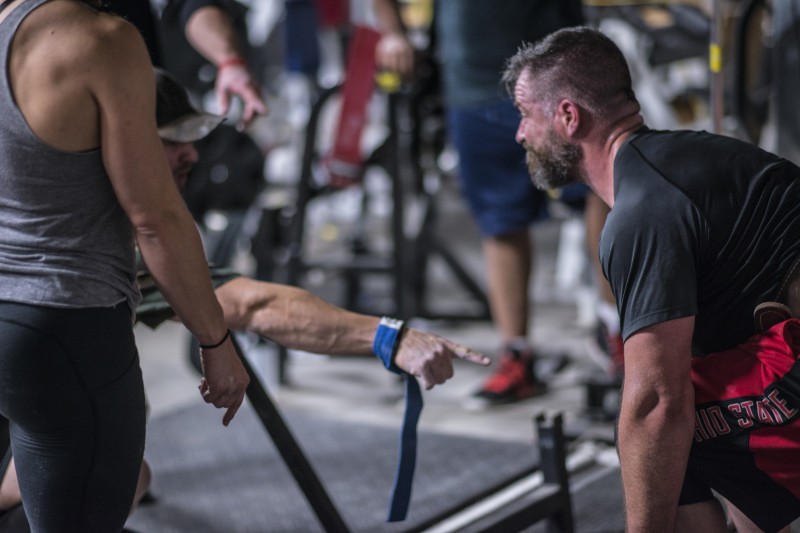
What Each Judge Sees: Bad Technique
In terms of rules of execution, it is easier for the central judge to observe downward movement of the bar (reason for disqualifying a lift). But the judges who have actually the best perspective on the lift are the two side judges, diagonally positioned. Why diagonally? If they are precisely at 90 degrees, the plates will create an obstacle to the observation of the knee and hip lockout. If they are located on the back, diagonally, they will get confused with the same things, since they will watch the hip lockout from the glutes and the knee lockout from the hamstrings, and not the quadriceps and knees.
Properly located, though, the side judges are at an advantage, relative to the central judge, to observe these lockout issues. This is why frequently a lifter will get two red lights from the side judges for insufficient lockout and a white light from the central judge. This is not because the central judge thought the lift was good, but because the lifter always gets the benefit of doubt.
The most common reason for disqualifying a deadlift, though, is either “hitching” or “ramping,” both of which are related to a secondary flexion of the knees. Keep this in mind: from beginning to end of the deadlift, nothing flexes. There is only extension. If anything is flexing, if an angle becomes smaller instead of greater, it’s a simple call for the judge: red light. There are no exceptions. If the knee was extending and then flexed, the bar was “supported on the thighs,” which every single rulebook in the world describes as illegal. Whether they call it or not as a bad lift, it is not my problem. “Hitching” is trying to use the thighs to help the pull. “Ramping” is not different, except usually it implies that the bar slides along the thighs (with the flexed knees providing a “ramp”).
All three judges can also see improper shoulder lockout.
All these things happen because of improper technique. And the funny thing is that we, the judges, can tell who will hitch or ramp and who will fail to lockout shoulders from the first easy opener. It never fails: the knees extend first, the hips go up, and the lift becomes a stiff-legged deadlift. Of course, the second attempt is heavier, and as the lifter sets up and fails to tighten their back, there you go: ass up. The bar gets heavier and the shoulders get rounder and rounder. At what is technically known as the “transition phase” or “knee pass,” it won’t really go, so the lifter flexes their knees. He then painfully pulls the bar up with what is left of his ability to perform a hip extension (with semi-flexed knees).
If this is the second attempt, I just tell them to put it down if they are grinding bad. It’s a lost lift, why keep the poor kid using the last ATP he has left to complete a bad deadlift? If this is the third attempt, well, whatever. Maybe he’ll feel good that in spite of the three red lights he should get, he did get the damn thing up.
Stuff: Chalk, Wrist Wraps, Belts, Socks, Knee Sleeves, Ammonia
A proper deadlift usually slides along the legs, easily scraping the skin out of shins. In my organization, socks up to the knees are mandatory for the protection of the lifter. On a second thought, the number of times we’d have to stop and clean blood from the bar would be annoying.
Are knee sleeves or knee wraps any useful? Not really. They are used in special cases. My left knee, for example, has undergone ACL reconstruction. There is a long scar over the patella, where the tendon for the graft was extracted, that healed improperly. It is extremely sensitive and painful to the touch, so I wear thin sleeves over both knees (just because it’s weird to feel something over just one knee). They give you no advantage at all. In fact, wearing them is a disadvantage, because they are an obstacle to the smooth sliding of the bar to its lockout point. Again, lots of people have bad knees. The older the lifter population, the more knee surgery and injury cases you will have.
Photos by Trinity Greer of Strength Power Fitness
Do wrist wraps provide any carryover? Any added advantage? Unlike with the bench press, where the advantage of stabilizing the joint is obvious, there is no evidence for that. No measurement was ever made. The act of pulling, alone, doesn’t cause the wrist to flex or extend, so stability doesn’t seem to be an issue either, unlike in the Olympic weightlifting movements where, after pulling, the bar must be caught. For the deadlift, and the deadlift alone, it may be more of a ritual for most wrist wrap users. I use it. I also use a pendant with a Viking rune with my name on it.
Belts should provide a great advantage, somewhat like the squat. Some extremely heavy lifters, however, reject the belt. Big belly, heavy belt, and having to squat to set up for the lift don’t seem to agree with them.
Chalk is a must. The reason we use chalk is to create better adherence between skin and bar. It’s a dehydrating agent. Chalk is magnesium carbonate (MgCO3), or at least that’s what it should be. Many of the products available in the market contain up to 20% CaCO3, which is actually blackboard drawing chalk. Theoretically, a good knurling should create great adherence. It doesn't. You need chalk. If you have small hands like I do, you need it even more.
As for ammonia, the evidence is that yes, it may have an important ergogenic effect over the rate of force development and on maximal force production (Bartolomei et al 2017, Velasquez et al 2011, McCrory 2006). The mechanisms are unclear, but most people use it. Before the availability of salts, ammonia was smelled in liquid form. The reason I don’t use it is that the first time I tried, the person who offered me the ammonia threw the damn fluid all over my nose and eyes. It wasn’t fun. No lift.
Pictures by Helena Coutinho. Atlanta, 2011. Socks and no socks.
Pictures by Helena Coutinho. Atlanta 2011. Chalk is used to improve adherence to the bar.
References
- Collection: Post-Activation Potentiation
- Collection: Dehydration, Performance, and Injury
- Bartolomei, Sandro, Federico Nigro, Gubellini Luca, Semprini Gabriele, Simone Ciacci, Jay R. Hoffman, and Franco Merni. "Acute Effects of Ammonia Inhalants on Strength and Power Performance in Trained Men." The Journal of Strength & Conditioning Research (2017).
- McCrory, P. "Smelling salts." British journal of sports medicine 40, no. 8 (2006): 659-660.
- Velasquez, James R. "The use of ammonia inhalants among athletes." Strength & Conditioning Journal 33, no. 2 (2011): 33-35.
Header image courtesy of Trinity Greer of Strength Power Fitness










